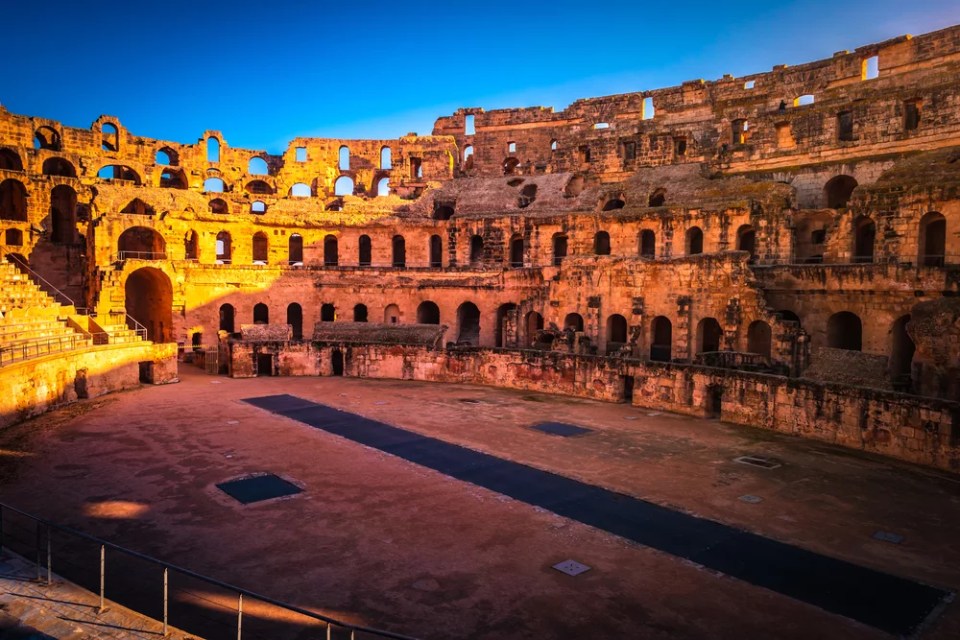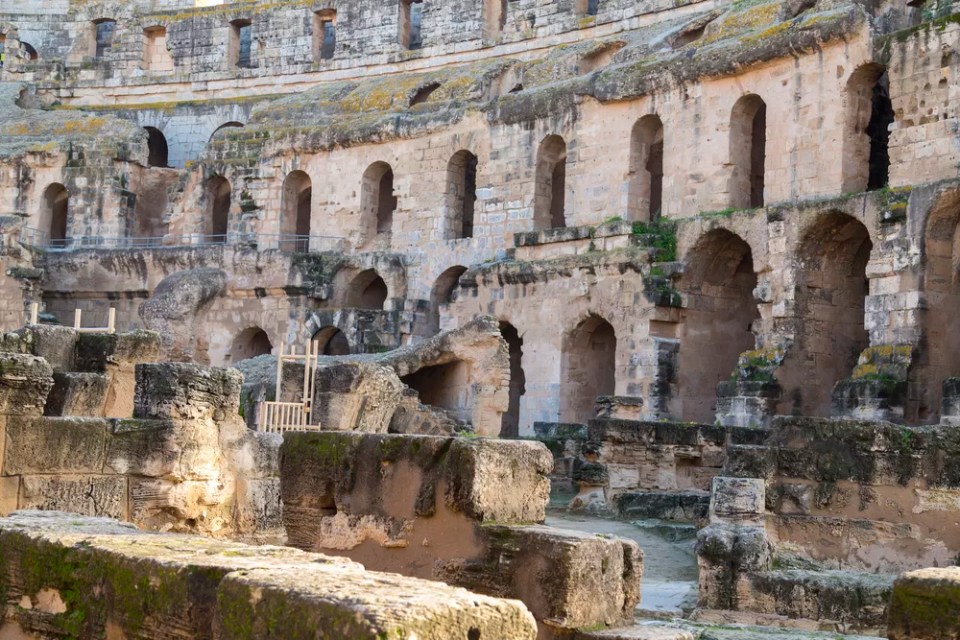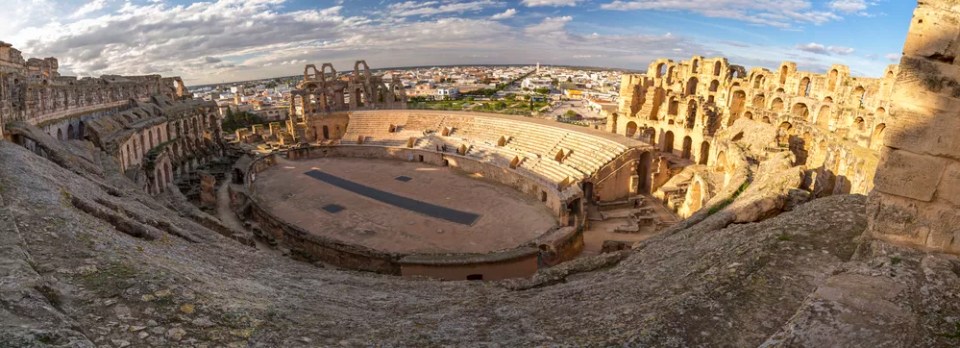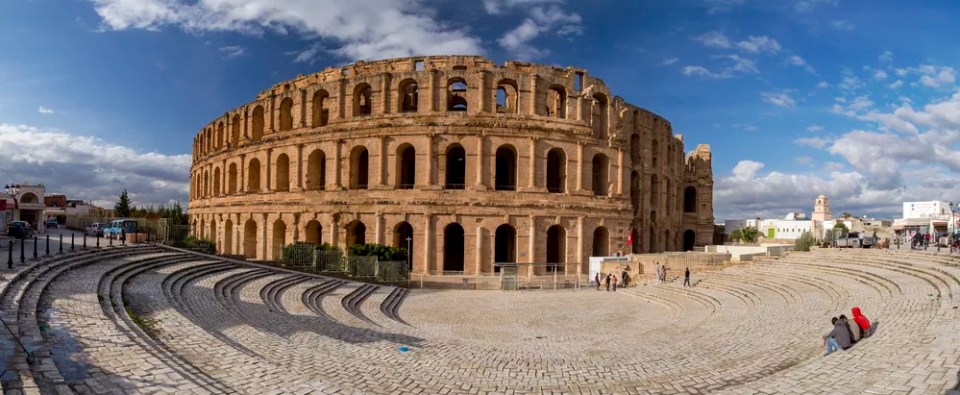The El Jem Amphitheatre, a UNESCO World Heritage site, is one of the largest and best-preserved Roman monuments globally, and it holds a unique place in Africa. Nestled in the small village of El Jem (formerly known as Thysdrus) in eastern Tunisia, this architectural marvel is a testament to the grandeur and extent of the Roman Empire in North Africa and the Middle East.
Photo by depositphotos.com
Constructed between 230 and 238 AD, the El Jem Amphitheatre was built entirely of massive stone blocks without foundations, standing as a free-standing structure. Though modeled after the Coliseum of Rome, it is not an exact replica of the Flavian construction. Designed to accommodate a staggering 40,000 spectators, this colossal monument boasts dimensions of 149 meters (486 ft) by 124 meters (400 ft) and ranks among the world’s largest amphitheaters.
Over the centuries, the El Jem Amphitheatre has fascinated and appalled visitors as the site for bloody gladiatorial combats and wild beast fights. It remains a crucial milestone in understanding the history of the Roman Empire in the South of the Mediterranean and Africa. Today, it is a popular tourist attraction, earning the nickname “African Colosseum” for its immense size and excellent preservation.

Photo by depositphotos.com
The El Jem Amphitheatre was initially built in the prosperous Roman town of Thysdrus, an important trading hub in North Africa after Carthage. The African Consul Gordian, who later declared himself the Roman Emperor during a rebellion against Emperor Maximus in 238 AD, oversaw its construction. Following the fall of the Roman Empire, the amphitheater served as a fortress during the Vandal attacks in 430 and Arab invasions in 647.

Photo by depositphotos.com
This majestic monument is the only amphitheater in the world, besides the Colosseum of Rome, to retain an intact facade with three levels of galleries. The interior has preserved most of the supporting infrastructure for the tiered seating. A basement area beneath the arena, discovered in 1904, gives insight into how the amphitheater functioned. A main tunnel led 35 km to the sea, where elephants dragged rock, Tunisian marble, and Italian marble deliveries during the 60 years of construction.

Photo by depositphotos.com
As one of Africa’s most visited and important monuments, the El Jem Amphitheatre serves as a beacon for exploring the Roman architecture that once spanned…
Click Here to Read the Full Original Article at Unusual Places…
